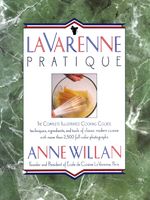Advertisement
Cabbage, Brussels Sprouts
By Anne Willan
Published 1989
One of the oldest of all vegetables, the cabbage is both versatile and hardy, appearing in such regional dishes as Scottish colcannon, German sauerkraut, Irish corned beef and cabbage, French potée stews, and the many European cabbage soups. Whole cabbage stuffed with ground pork, ham and breadcrumbs or rice has long been a country favorite, while individual leaves may also be rolled around stuffing.
All cabbages are part of the Brassica genus. The leaves of some are loose, but other varieties have compact, dense heads that may be round, flat, pointed or elongated, smooth or curly, with a range of color from yellow-green to magenta red. When some varieties of cabbage are cut, they release a strong mustard oil; this will dissipate during cooking or may be reduced by blanching. Cabbage steam can also have an unpleasant odor, but adding a piece of bread, a walnut or a sprig of parsley to the cooking water may help. Cabbage should be cooked until it is al dente or just tender; when overcooked it becomes soggy and may taste unpleasantly strong.


